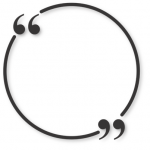3.7: Strategy #4: Citation Tracking
- Page ID
- 70235
A final strategy is to examine the works cited by the authors of the initial sources you find.

Consider that scholarship is a conversation among researchers on a particular subject, with everyone offering evidence, theories, and criticism to advance what is known and what may not be known about a topic. Your task is to understand what connections are being made between these viewpoints, how you will integrate them in your own work, and what conclusions or advances you might be able to add.
In practical terms, as a researcher, this means paying attention to the reference lists or bibliographies of the works you find in your initial searching. This is known as citation tracking and is an important strategy to use to find additional resources.
There are a couple of ways to do this:
- Follow the authors and works mentioned in the introduction or literature review section of your first article
- Use the links that Summon, library databases, and sometimes Google Scholar provide to locate any articles that cite your article, as well as other recommended or related works. Look for: Cited By, Recommended, or Related articles
ACTIVITY: Click on the hotspots
The image below is taken from the introduction of an article on populism, found in one of the library’s databases.
(Source: Moffitt, B., & Tormey, S. (2014). Rethinking populism: politics, mediatisation and political style. Political Studies, 62(2), 381–397. https://doi.org/10.1111/1467-9248.12032)
An interactive or media element has been excluded from this version of the text. You can view it online here:
https://kpu.pressbooks.pub/doingresearch/?p=60


